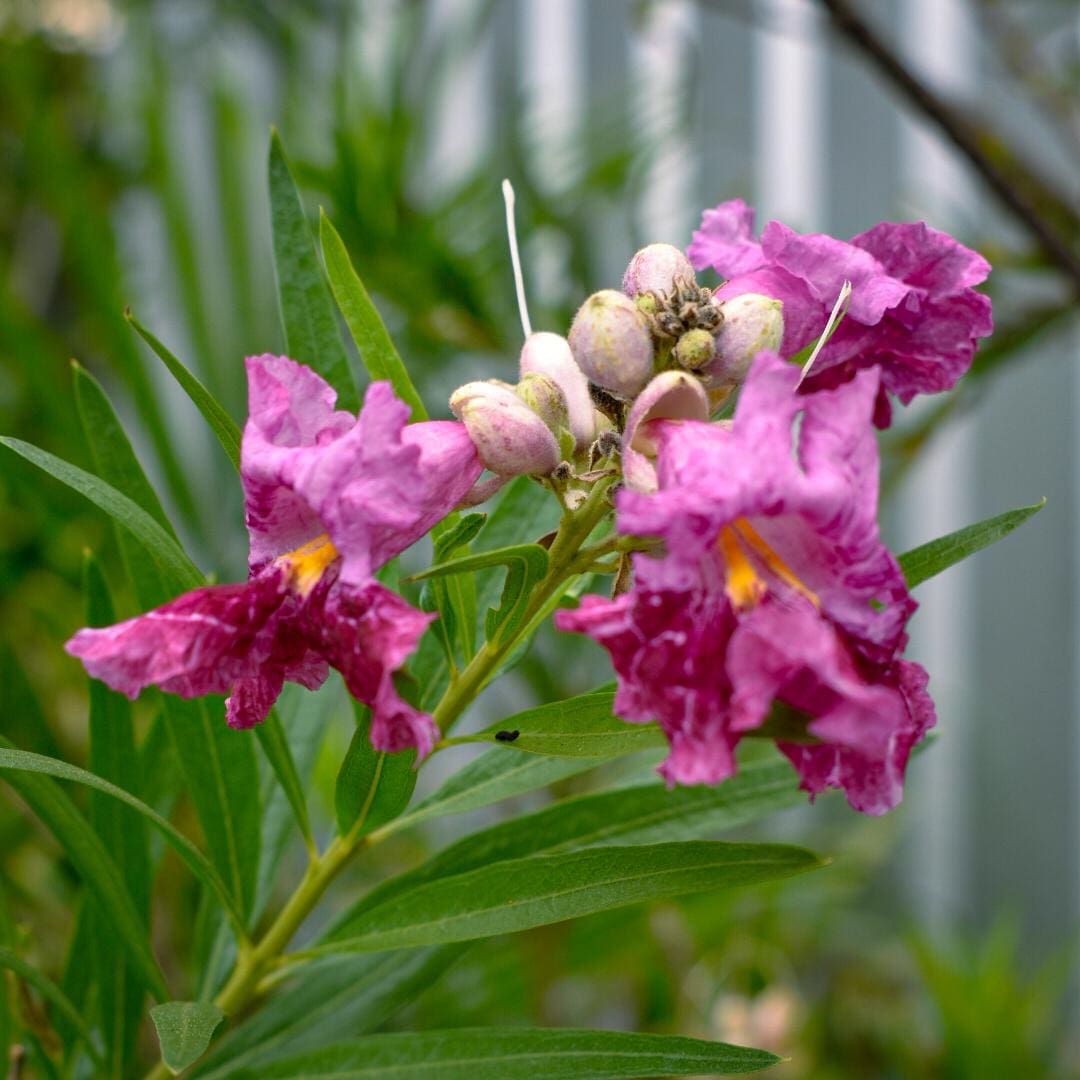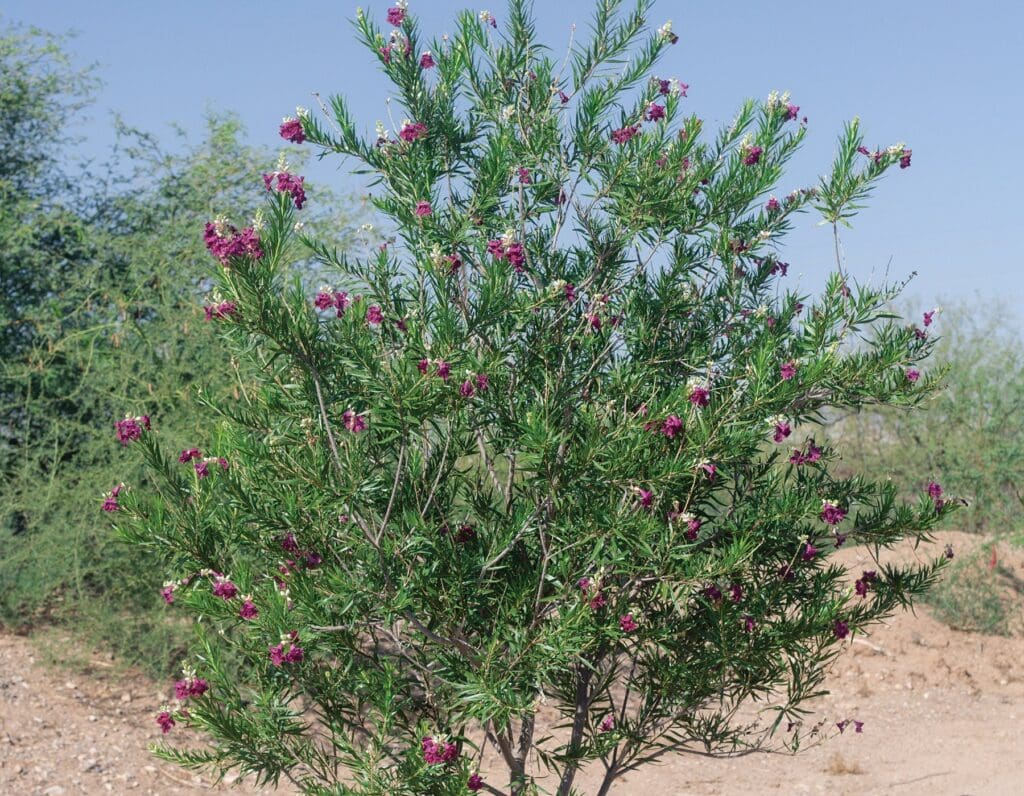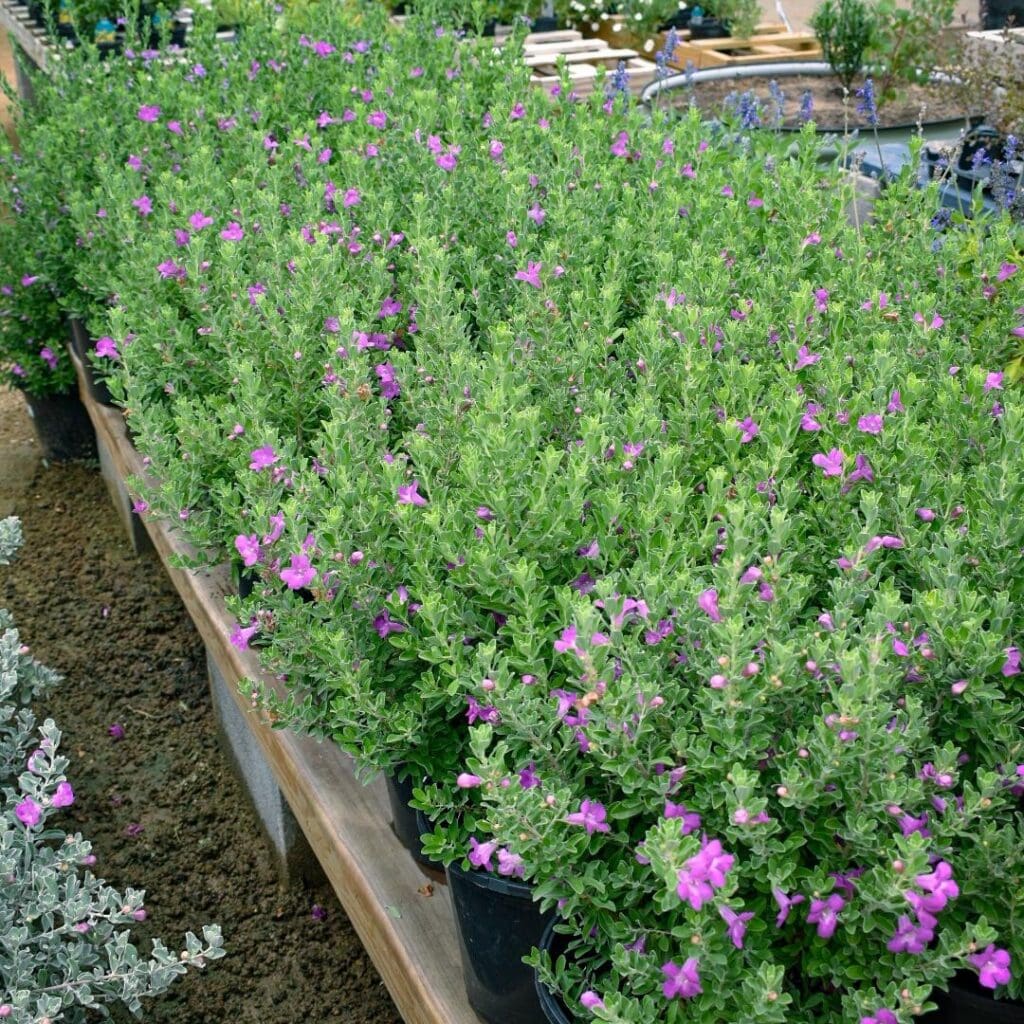What’s a nativar? Simply put, it’s a plant that has been cultivated by humans, a cultivar, of a native plant species. Why would you do that? Why not just plant the true native species? Well, because plant growers and gardeners want more variety and sometimes we want to dial in certain desirable traits (shorter, taller, different bloom colors, etc.). Here are 3 examples of nativars which happen to be 3 of our fav plants for summer!
Desert Willow “Sweet Bubba”
Desert Willow is one of our absolute favorite small trees for South Texas. It thrives in low-water conditions and gives you (and our pollinators) tons of blooms to enjoy from late spring through fall. It grows to about 15 feet and prefers dry, well-drained soil. We just planted one in our new raised beds in front of Gill’s! The Sweet Bubba variety of Desert Willow has been bred for more narrow, graceful leaves, a deeper bloom color, and to have fewer seed pods to deal with.
Texas Sage “Lynn’s Legacy”
Texas Sage probably has more nativars (different varieties) than any other Texas native plant. It comes in a range of sizes, lots of different shades of sage green, with different blooms and different growth habits – many different uses in the landscape. A relatively new one that we’re super excited about is “Lynn’s Legacy”. Most varieties of Texas Sage bloom based on changes in barometric pressure just before or after a rain. Lynn’s Legacy aka Lynn’s Everblooming is not as dependent on changes in humidity and pressure. It’s bred to bloom more often and more consistently. You’ll get a nice 5×5′ sage with more upright leaves, and denser growth habit, darker green foliage, and more blooms!
Dwarf Barbados Cherry

Barbados Cherry is native to South Texas and Mexico, through parts of the Caribbean, and into South America. The true native variety is a large shrub/small tree that grows 9-18′ tall, whereas the dwarf variety stays 4-6′ tall making it more suitable for most landscapes. You’ll get lots of small pink blooms all summer followed by the fruits, which are like a cross between a cherry and an apple, hence the name Manzanita in Spanish. Great for making jelly!





Reader Interactions